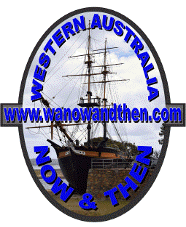|
Government Geologist, Harvey Page speaking of iron ore in the Pilbara said: 'Iron occurs in immense lodes, there is enough to supply the whole world should present supplies
run out ... but as iron ores are of no value it is useless to trouble about them.'
Despite this pessimistic statement, the story of the Pilbara from the mid 1950s onwards is also the story of iron.
Although Francis Gregory reported deposits of iron ore in the area during his expedition in
1888, nothing was done about mining the ore until the 1950s.
The credit for the development of the iron ore mines generally goes to two men - Stan Hilditch
(see Newman for more on his story) and Lang Hancock.
Today exports exceed 87 million tonnes with an annual value of well over $2,000,000,000. As China's economy booms the north west of W.A. will expand even further but it is to be hoped
that progress doesn't come at the expense of a unique environment.
Reserves are estimated to last for the next 1000 years. Most of the ore is located in the Pilbara and comes from mines at Tom Price, Mt. Newman,
Paraburdoo and Pannawonica.
The first overseas shipment of iron ore was not, as you might expect, from one of the north west ports, but from Geraldton in March 1966.
How much is iron ore worth to the Australian economy? In 2008-9 the Department of Mines listed the value of iron ore exports at 33.6 billion dollars. Crude oil came in at 10.9 billion,
liquefied natural gas at 8.5 billion and gold at 5.2 billion.
Like any other industry, iron ore mining depends entirely on demand and as China's economy has started to slow, so has the demand for ore. This has now led to a slump
in prices and the shut-down of a number of smaller mines.
|







